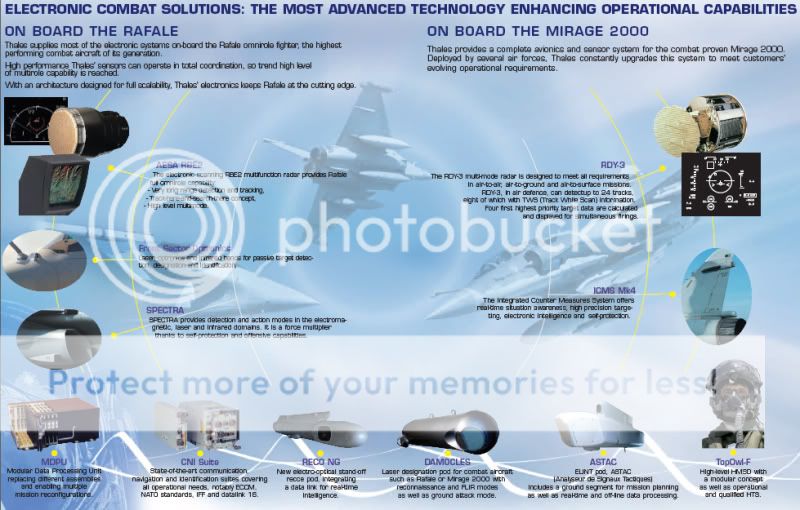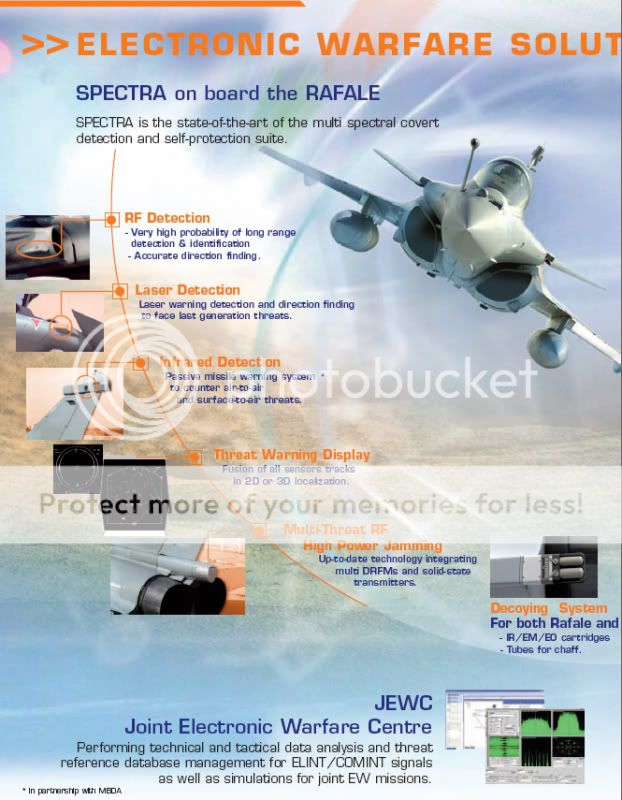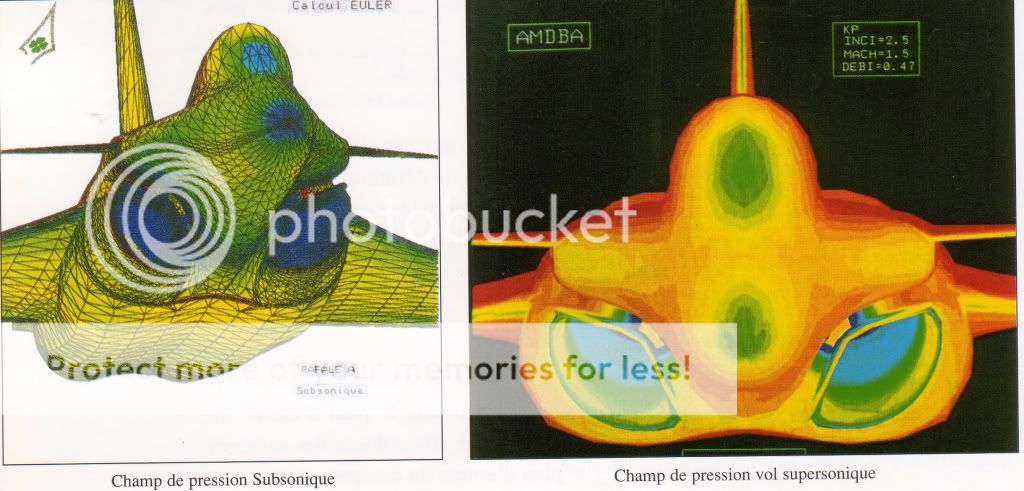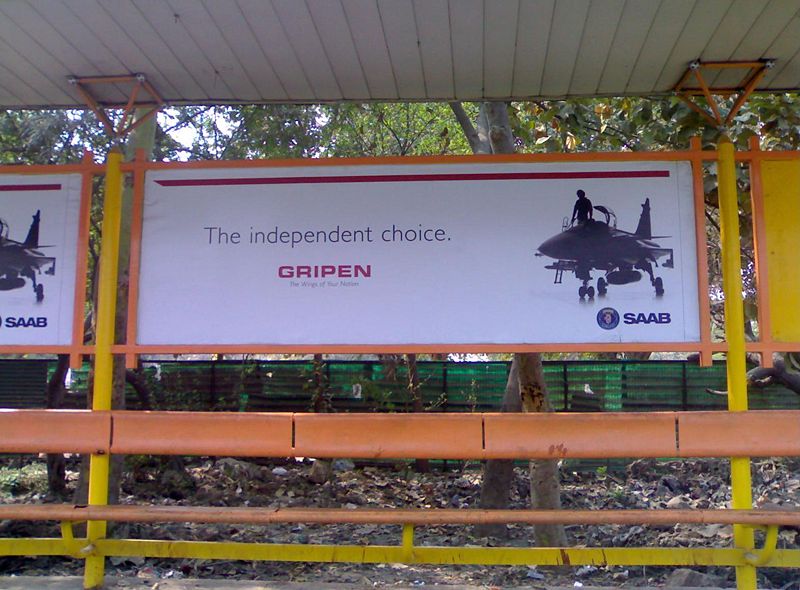- Joined
- Apr 20, 2009
- Messages
- 1,563
- Likes
- 27
Compitators
F-16 Fighting Falcon (Lockheed, USA).
JAS-39 Gripen (Saab, Sweden; marketed by Britain’s BAE).
MiG-35 (Rosonboronexport, Russia).
Eurofighter Typhoon (EADS/BAE, Europe & Britain).
F/A-18 E/F Super Hornet (Boeing, USA).
Rafale (Dassault, France).
Advantages and disadvantages
F-16 Fighting Falcon (Lockheed, USA).
Advantage
DisadvantageStrengths include the widest multi-role capability among lightweight fighters; its proven AN/APG-80 AESA radar; the addition of integrated IRST capability; the widest choice of proven avionics and weapon systems; a long record of proven service so all issues are known; and widespread compatibility with potential allies in Asia and the Middle East who also fly F-16s. The combination of an AESA radar on a less expensive platform is also good news for cruise missile defense efforts, if that’s considered a priority.
the Indian Air Force has never seemed very interested in the F-16. Weaknesses include the fact that Pakistan also flies F-16s; the fact it’s a new aircraft type, so the entire support infrastructure would have to be developed; Lockheed Martin’s difficulty in complying with industrial offset provisions, given their lack of penetration in India.
JAS-39 Gripen (Saab, Sweden; marketed by Britain’s BAE).
Advantage
Gripen NG begins to address the aircraft’s range limitations, and would include an AESA radar among its other enhancements. Other strengths include a wide choice of integrated weapons and pods; reasonable purchase cost; the fact that it has been designed for exceptional cost of ownership; and the ability operate from roads instead of runways if necessary.
As an interesting side note, the JAS-39NG’s use of GE’s F414G engine could create future commonality with the failed Kaveri engine’s successor. The Tejas LCA will use GE’s F404 engines until an Indian substitute is ready, and GE’s F414 is one of 2 engines under consideration as the basis for the Tejas Mk2’s power plant.
With respect to industrial offsets, Saab has an excellent record in countries like South Africa, Hungary, The Czech Republic et. al.
Disadvantage
The JAS-39’s drawbacks include its short range; the fact it’s a new aircraft type for the IAF; its AESA radar’s developmental status; and a low volume of international orders to date that raises questions about the platform’s ability to modernize over the next 30-40 years.
The Gripen’s acceptance carries no spin-off geopolitical benefits, however, and that last weakness may prove to be the plane’s most critical hindrance in this competition.
MiG-35 (Rosonboronexport, Russia).
Advantage
This modified MiG-29 includes improved radar and avionics that give it multi-role capability, extra fuel in a new aircraft “spine,” and thrust-vectoring engines a la India’s SU-30MKIs. Strengths include compatibility with the existing and future MiG-29 fleet, and its ability to carry advanced Russian missiles already in service like the revolutionary AA-11/R-73 Archer and longer range AA-12/R-77 “AMRAAMski.” The presence of MiG-29 infrastructure and a new plant for license-building RD-33 Series III engines in India also makes compliance with industrial offset requirements easier.
Disadvantage
The MiG-29’s biggest weaknesses were short range, engines that produce telltale smoke (very bad in air combat) and lack of true multi-role capability; the MiG-35 largely fixes these issues, and may even add an AESA radar of its own if Phazotron-NIIR can have its new Zhuk-MAE ready in time. Technology sharing and co-production are also considered to be strengths; as one Indian officer put it: “Russians have their problems of delayed projects and unreliable spare supply but they give access to everything, unlike the Americans.” He’s referring to the IAF’s not-so-great experience with India’s existing MiG-29s, which have had maintenance problems in addition to their other deficits.
Remaining weaknesses in the MiG-35 bid include difficulties India is having with Russian firms over the refit of its new carrier, and over its orders for SU-30MKIs. There has also been legitimate speculation about the future viability of the MiG-29 family platform, which has been eclipsed in many ways by the SU-30. Algeria’s canceled $1.8 billion order adds further risk to the platform
Eurofighter Typhoon (EADS/BAE, Europe & Britain).
Advantage
A fourth generation aircraft currently optimized for the air-air role through its performance characteristics and what is by all accounts an excellent pilot interface. One surprise plus for Eurofighter could be its Eurojet EJ200 engines, which are being considered as the base powerplant for India’s LCA Tejas Mk2 Tranche 2 upgrades are giving this plane full multi-role capabilities
Disadvantage
F/A-18 E/F Super Hornet (Boeing, USA).Weaknesses include the aircraft’s $100+ million expense, which may stretch India’s budget to the breaking point; the fact it’s a new aircraft type for the IAF so the entire support infrastructure would have to be developed; its lack of naval capability; the developmental status of its CAESAR (Captor AESA Radar) technology; and the non-existent geopolitical benefits of selecting it. Given the Eurofighter’s performance and costs, simply buying more SU-30MKIs would appear to make far more sense.
Advantage
DisadvantageHighly upgraded version of the F/A-18 A-D Hornet, enlarged and given new engines and avionics. Commonality between the Hornet and Super Hornet is only about 25%. Strengths include its powerful AN/APG-79 AESA radar, which has drawn significant interest from India. This radar could allow Super Hornets to play a unique role in India’s fighter fleet as versatile “quarterbacks” (or better yet, “cricket captains”) due to their radar’s performance and information sharing abilities. Other advantages include carrier capability, a very wide range of integrated weapons, a design that is proven in service and in combat, F414 engines that may also serve as the base for LCA Tejas Mk2; and complete assurance in its future upgrade spiral, given the US Navy’s commitment to it.
The existence of a dedicated electronic warfare variant as of 2009 in the EA-18G Growler may also be a potent motivator, as the growth of sophisticated air defense systems will place a growing premium on this unique capability. Last but certainly not least, this choice offers an opportunity to create an early “win” which would strengthen India’s new alliance with the USA and prove its new status in the world. After all, when clearance for the aircraft was given, no other nation had even been offered the F/A-18 E/F Super Hornet.
Since then, of course, close American ally Australia has bought 24 F/A-18F Block IIs in a controversial A$ 6 billion purchase, and even taken steps to modify the aircraft toward EA-18G Growler status. Australia’s deployment of Super Hornets gives the platform an additional selling point in the “allied commonality” department, and Boeing’s planned $1.5 billion investment in India’s aerospace market may help deal with defense industrial offset issues. The Super Hornet’s Boeing connection adds many industria options in the civil aircraft market as well.
Weaknesses of the Super Hornet platform include the aircraft’s expense. Given the costs to other customers so far, it seems unlikely that Boeing can deliver 126 F/A-18 E/F Block II aircraft for just $10.2 billion, let alone aircraft plus lifetime support. The Super Hornet also offers poorer aerodynamic performance than the Eurofighter or Rafale, due to inherent airframe limitations. Finally, it’s a new aircraft type for the IAF, so the entire support infrastructure would have to be developed from the ground up.
Rafale (Dassault, France).
Advantage
DisadvantageAdvantages include demonstrated carrier capability in the Rafale-M, which could be a very big factor if the RFP includes that as a requirement. The aircraft offers exceptional ordnance capacity for its size, and can have its range extended via conformal fuel tanks. It offers superior aerodynamic performance over the F/A-18 family. The Rafale claims “supercruise” capability, but observers are skeptical and it has been challenging to demonstrate this with the Snecma R88-2 engine. The Rafale also offers some equipment, maintenance and spares commonalities with existing Mirage 2000 fleet, which would probably increase if India’s Mirage 2000s are modernized in future. France’s reliability as a weapons supplier, good history of product support, and long-standing relations with India, offers additional plusses.
http://www.defenseindustrydaily.com...ndias-mrca-fighter-competition-changes-01989/Weaknesses include the continuing absence of a compatible surveillance and advanced targeting pod, the need for additional funds and work to integrate many non-French weapons if one wishes to use them on the Rafale, and its lack of an AESA radar until Thales finishes developing the RBE2. The Rafale’s failure to win any export competitions is also an issue – one that reaches beyond mere perception of “also-ran” status. As DID noted in an update to “Singapore’s RSAF Decides to Fly Like An Eagle,” export failures are already forcing cuts in future Rafale procurement, in order to pay for modernization. That dynamic is likely to get worse over the next 30 years.

















